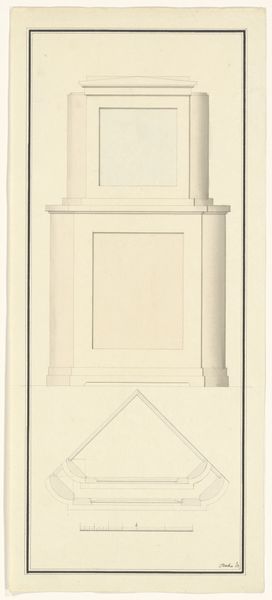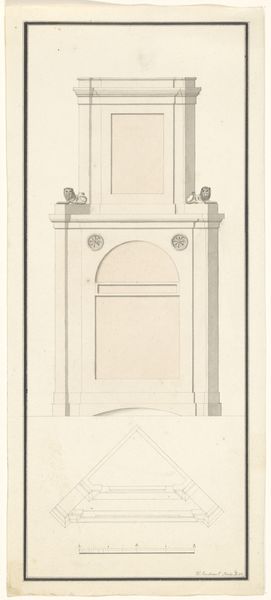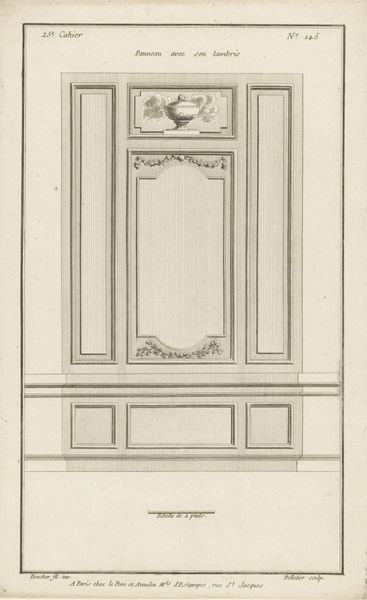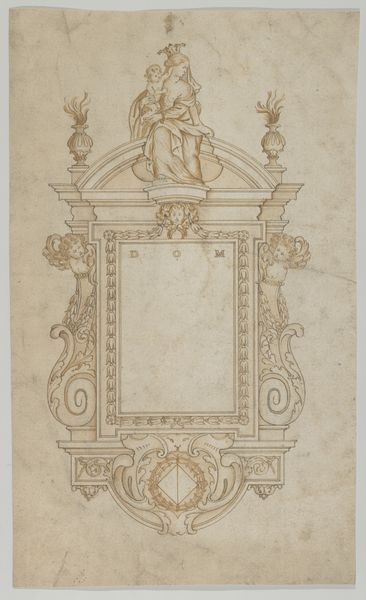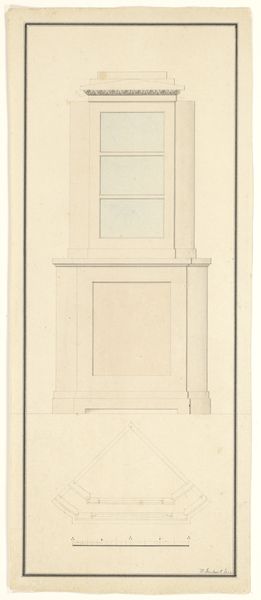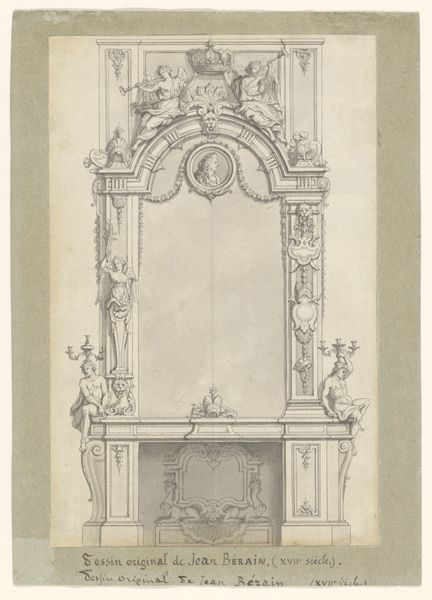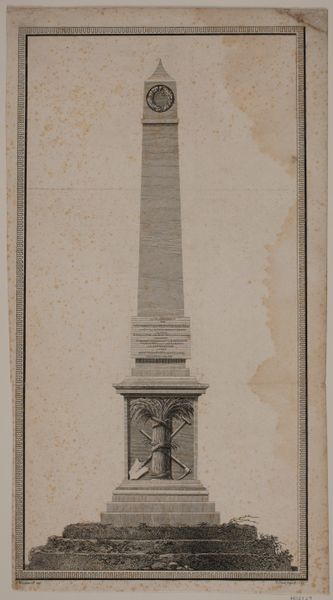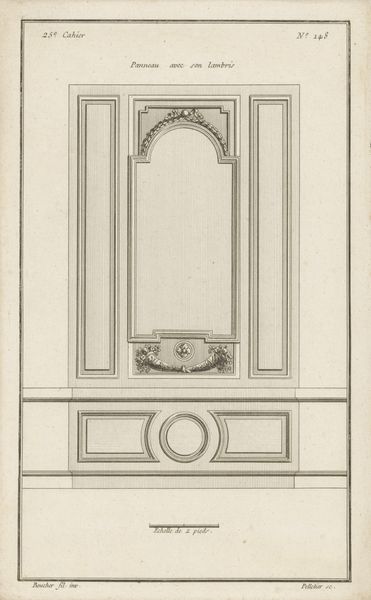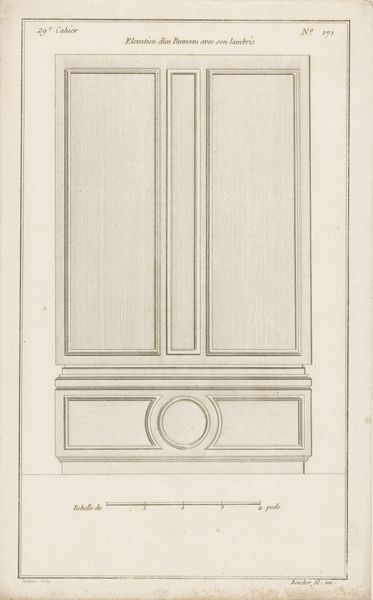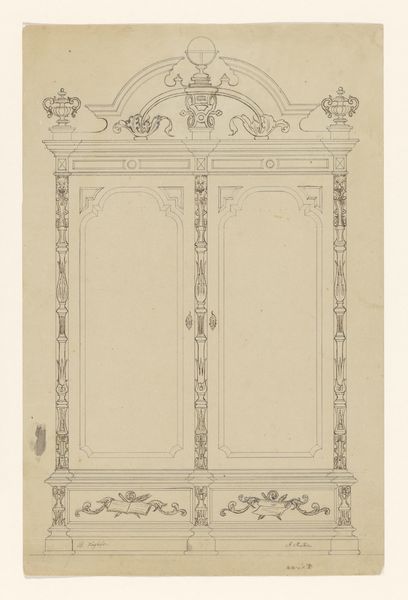
drawing, paper, ink, pen, architecture
#
drawing
#
classical-realism
#
paper
#
form
#
11_renaissance
#
ink
#
geometric
#
line
#
pen
#
academic-art
#
italian-renaissance
#
architecture
Dimensions: height 391 mm, width 253 mm
Copyright: Rijks Museum: Open Domain
Curator: Andrea Palladio's "Design for an Altar," created sometime between 1518 and 1599, presents a strikingly austere, almost minimalist architectural sketch on paper. Editor: The cool gray hues immediately give me a somber impression. It's like staring at the blueprint for a silent, reverent space. The crisp lines emphasize its structural formality, which makes the blank space within the arch all the more intriguing. Curator: Palladio was deeply influenced by classical Roman architecture; his treatises heavily impacted subsequent architectural styles. You can see how he applied classical orders and proportions, aiming to revive what he considered architecture's golden age. This altar design, rendered in pen and ink, is less about religious ornamentation and more about architectural purity. Editor: And yet, that calculated austerity speaks volumes. It strips away excess to concentrate spiritual contemplation. It's like Palladio is posing questions about power, belief, and the visual vocabulary of sacred spaces. Curator: Absolutely. Remember, the Renaissance was a period where art served powerful social and political functions, where religious institutions were major patrons of the arts. An altar's design communicated authority, divine connection, and doctrinal stability. Editor: Yes, but also, by emphasizing form so strongly, Palladio directs attention to the social and political dimensions that underpin artistic expression and consumption, and, in effect, he renders a critique. Where's the warmth, where are the poor? Curator: I agree, but think about the visual power embedded in its clean design, meant to be translated into imposing, awe-inspiring, three-dimensional structures that could influence communities and reinforce religious teachings, too. Editor: It definitely presents an intersection between faith and the establishment in visual terms. Thank you. I see the power structures inherent in this art, especially if considering social classes in Renaissance Italy. Curator: It offers a great perspective on how artists responded to and shaped their worlds. Thank you for offering this viewpoint!
Comments
No comments
Be the first to comment and join the conversation on the ultimate creative platform.
